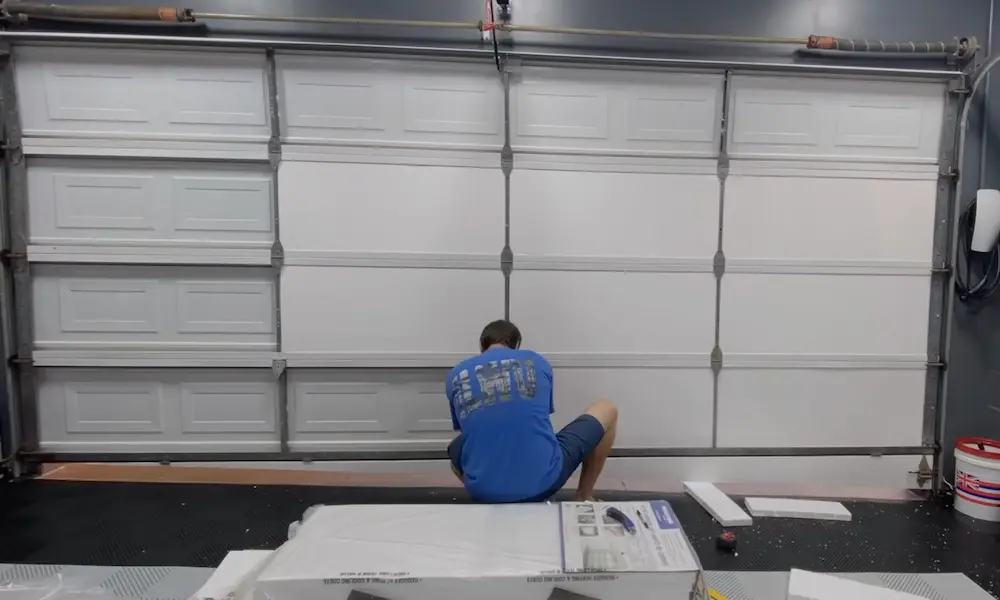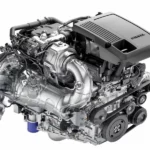Your garage door refuses to close, leaving your home vulnerable and your belongings exposed. Frustrating, right? Whether it happened suddenly or has been getting worse over time, a malfunctioning garage door is more than just an inconvenience—it’s a security risk that needs immediate attention.
But before you call in the professionals, there are several troubleshooting steps you can take yourself. Let’s dive into the most common reasons your garage door won’t close and how to fix them.
Common Obstructions and Sensor Issues
Objects Blocking the Door’s Path
Your garage door’s safety features are working exactly as designed when they refuse to close because of an obstruction. These modern systems use sensors to detect anything in their path to prevent accidents.
Check for:
- Obvious items like bikes, tools, or recycling bins
- Smaller objects that may have fallen near the track
- Your car parked slightly too far forward
- Debris or leaves that have blown into the doorway
Simply clearing the path often solves the problem immediately. If your garage door still won’t close after removing visible obstructions, there might be something less obvious triggering the safety sensors.
Dirty or Misaligned Safety Sensors
Those small devices mounted near the floor on each side of your garage door opening aren’t just decorative—they’re critical safety sensors. They work by projecting an invisible beam across the doorway. When something breaks this beam, the door won’t close.
Look at the indicator lights on your sensors:
- Both sensors should have steady lights (typically one green, one red)
- Blinking lights or no lights suggest misalignment or power issues
- Dust, cobwebs, or dirt on the sensor lenses can block the beam
To clean the sensors:
- Turn off power to the garage door opener
- Gently wipe each sensor lens with a clean, soft cloth
- Remove any cobwebs or debris around the sensors
- Restore power and test the door
According to industry experts, dirty sensors are among the most common and easily fixed causes of garage door closure problems.
Fixing Misaligned Sensors
If cleaning didn’t solve the problem, your sensors might be misaligned. These sensors must point directly at each other to function properly.
Try this basic alignment method:
- Look for the indicator lights on both sensors
- Slightly loosen the bracket holding the sensor
- Adjust the sensor’s angle until both lights are steady
- Tighten the bracket carefully without moving the sensor
- Test your door
For stubborn alignment issues, you may need to measure the height of each sensor to ensure they’re at exactly the same level—they should typically be about 6 inches above the floor.
Mechanical Problems Preventing Closure
Broken Springs or Cables
Garage doors are heavy—often weighing 150-300 pounds. Springs and cables do the heavy lifting, and when they break, your door won’t function correctly.
Signs of broken springs or cables:
- Door feels extremely heavy when lifting manually
- Visible gaps in the springs
- Frayed or hanging cables
- Door closes unevenly or at an angle
⚠️ Important safety warning: Never attempt to repair or replace springs or cables yourself. These components are under extreme tension and can cause serious injury or death if mishandled. Always call a professional for these repairs.
Track Alignment and Roller Problems
Your garage door runs on metal tracks, and even slight misalignments can cause operational issues.
Check your tracks for:
- Visible bends or dents
- Loose mounting brackets
- Debris inside the track
- Damaged or worn rollers
- Unusual noises during operation
Minor track issues can sometimes be fixed by:
- Loosening the mounting brackets
- Tapping the track gently back into proper position
- Re-tightening the brackets securely
For severely bent tracks or damaged rollers, professional replacement is usually necessary for safe operation.
Trolley Disconnection Issues
The trolley is the mechanism that connects your door to the opener’s drive chain or belt. If your door closes manually but won’t close using the opener, your trolley might be disconnected.
This commonly happens after:
- Power outages when you manually opened the door
- Someone pulled the emergency release cord
To reconnect the trolley:
- Locate the emergency release cord (usually has a red handle)
- Pull the cord toward the garage door opener
- Manually lift the door until the trolley reconnects with the mechanism
- Test the opener
According to door repair specialists, disconnected trolleys are a frequent cause of automatic closure issues that can be fixed without professional help.
Electronic and Power-Related Problems
Remote Control and Transmitter Issues
Sometimes the problem isn’t with your door but with the device controlling it.
Check these remote-related issues:
- Dead batteries in transmitters
- Damaged or dirty buttons on remote
- Programming errors after power outages
- Interference from nearby electronic devices
Simple fixes include:
- Replacing batteries
- Cleaning remote contacts
- Reprogramming remotes (usually by pressing the “learn” button on your opener)
- Testing the wall-mounted button to isolate the issue
If your wall button works but remotes don’t, it’s likely a transmitter problem rather than a door issue.
Power Supply Problems
Even the most sophisticated garage door opener won’t work without proper power.
Verify power is reaching your opener by checking:
- The opener is plugged in securely
- The circuit breaker hasn’t tripped
- Any GFI outlets haven’t been triggered
- Indicator lights on the opener unit
For electronic glitches:
- Unplug the opener for 30 seconds
- Plug it back in
- Allow it to reset
- Test operation
Power surges can sometimes reset your opener’s programming or damage sensitive electronics. If basic power troubleshooting doesn’t help, the opener’s circuit board might need professional attention.
Limit Switch and Travel Setting Errors
Garage door openers have settings that control how far the door travels. If these are incorrect, your door might reverse before fully closing.
Signs of limit switch problems:
- Door almost closes but then reverses
- Door closes partially then stops
- Opener motor runs longer than it should
Adjusting these settings varies by manufacturer, but generally involves:
- Locating the limit adjustment screws on your opener
- Turning the “down” limit screw in small increments
- Testing after each adjustment
- Repeating until the door closes completely
Many modern openers have digital controls for these settings. Check your owner’s manual for specific instructions for your model.
DIY Troubleshooting Steps
Quick Assessment Checklist
Before attempting more complex fixes, run through this basic troubleshooting checklist:
- Check for physical obstructions in the door’s path
- Verify the door isn’t manually locked
- Test the wall button (if this works but remote doesn’t, it’s a remote issue)
- Check for blinking lights on the opener (consult manual for error codes)
- Look at sensor indicator lights
- Verify power to the opener
- Test manual operation by pulling the emergency release
This systematic approach helps identify the most likely culprits quickly without wasting time on unnecessary steps.
Sensor Maintenance Tips
Safety sensors are critical components that benefit from regular maintenance:
- Clean sensor lenses monthly with a microfiber cloth
- Check alignment regularly by verifying steady indicator lights
- Keep the sensor area clear of stored items
- Protect sensors from physical impacts
- Ensure wiring to sensors isn’t damaged
Regular sensor maintenance prevents most common closure issues before they start. According to garage door experts, properly functioning sensors are essential for both safety and reliability.
Mechanical Maintenance You Can Do Yourself
Several mechanical maintenance tasks are perfectly safe for homeowners to perform:
- Lubricate moving parts with silicone-based lubricant (not WD-40)
- Tighten loose hardware with appropriate tools
- Clean door tracks of debris and build-up
- Inspect weatherstripping for damage
- Check rollers for wear and proper movement
- Listen for unusual noises during operation
| Component | Recommended Lubricant | Frequency | What to Avoid |
|---|---|---|---|
| Hinges | Silicone spray | Every 6 months | WD-40, grease |
| Rollers | Silicone spray | Every 6 months | Petroleum products |
| Tracks | None – keep clean only | Monthly | Any lubricant |
| Springs | Silicone spray | Annually | DIY adjustments |
Regular maintenance can extend the life of your garage door system and prevent unexpected failures.
Signs You Need Professional Service
Call a professional immediately if you notice:
- Broken springs or cables
- Door significantly off-track
- Strange grinding or scraping noises
- Door panels separating or buckling
- Door moves very slowly or jerks during operation
- Repeated failure after DIY troubleshooting
- Any safety-related malfunction
Many reputable garage door companies offer same-day emergency service for security-related issues.
Finding a Qualified Garage Door Technician
Not all garage door services are created equal. Look for:
- Companies with at least 5+ years in business
- Proper licensing and insurance
- Technician certification from major door manufacturers
- Positive online reviews (especially regarding honesty)
- Clear upfront pricing
- Warranties on both parts and labor
Ask if the technician will perform a complete system inspection rather than just fixing the immediate problem. Professional maintenance typically includes comprehensive safety checks that can prevent future issues.
Preventative Maintenance to Avoid Future Problems
Regular Inspection Schedule
Prevent garage door closure issues with a regular maintenance schedule:
Monthly:
- Clean and check sensor alignment
- Remove debris from tracks
- Listen for unusual noises
- Test door balance manually
Quarterly:
- Lubricate moving parts
- Tighten hardware
- Check weatherstripping
- Test auto-reverse safety features
Annually:
- Professional inspection of springs and cables
- Complete system safety check
- Opener motor performance evaluation
- Remote and keypad battery replacement
This proactive approach catches potential problems before they leave you with a door that won’t close.
Weather-Related Considerations
Different climates create unique challenges for garage doors:
In cold climates:
- Lubricate more frequently as cold thickens grease
- Check weatherstripping for cracks from cold
- Test sensors during extreme temperatures
- Keep snow and ice away from the door’s path
In hot/humid climates:
- Check for expanded wood or warping in wooden doors
- Clean sensors more frequently (dust and insects are common)
- Inspect electronic components for humidity damage
- Lubricate to prevent rust in high-humidity areas
Electronic Protection Tips
Protect your garage door’s electronic components:
- Install a surge protector for your opener
- Replace batteries in remotes and keypads annually
- Keep remote frequencies updated if interference occurs
- Back up opener settings if your model allows it
- Store a spare remote in a secure location
According to electronic security experts, power surges are a leading cause of opener circuit board failures.
Common Issues by Garage Door Brand
Chamberlain and LiftMaster Systems
These related brands use similar technologies and share common issues:
- “Force” setting adjustments often needed for seasonal changes
- Yellow “learn” button models prone to remote programming issues
- MyQ connectivity problems with certain routers
- Light bulb compatibility issues with newer LED bulbs
Try these brand-specific fixes:
- Reset force settings following seasonal temperature changes
- Use only Chamberlain/LiftMaster approved LED bulbs
- Check the purple antenna wire for damage if remote range is limited
- Reset MyQ connections after router changes
Genie Door Systems
Genie openers tend to experience:
- Limit switch drift requiring more frequent adjustment
- Safety beam sensors more sensitive to alignment issues
- “IntelliCode” rolling code occasionally needing reset
- Chain drive models requiring more frequent lubrication
Genie-specific troubleshooting:
- Reset travel limits more frequently than other brands
- Check for the proper color-coding on sensor lights
- Program all remotes at the same time for best results
- Use Genie-approved lubricants only
Wayne Dalton Systems
Wayne Dalton doors often have:
- Proprietary TorqueMaster spring systems requiring specialist service
- Unique track designs that can be more sensitive to misalignment
- iDrive openers with specific troubleshooting steps
- Special roller designs that differ from standard doors
For Wayne Dalton systems:
- Never attempt DIY repairs on TorqueMaster springs
- Use only Wayne Dalton approved replacement parts
- Follow specific balance testing procedures for these doors
- Consult specialized technicians familiar with the brand
Smart Garage Door Troubleshooting
WiFi and Connectivity Issues
Smart garage door systems add another layer of potential problems:
- WiFi signal strength affecting reliability
- App compatibility after phone updates
- Hub connectivity to home networks
- Firmware update failures
For smart connectivity problems:
- Check WiFi signal strength in the garage area
- Update opener firmware if available
- Verify compatible router settings
- Reset connection between opener and smart hub
- Ensure app has necessary permissions on your device
According to connectivity experts, router changes and updates are the most common cause of smart garage connectivity issues.
Integrations with Home Automation
Smart garage doors that work with broader home automation systems face unique challenges:
- Compatibility issues between platforms
- Delayed responses during peak network usage
- Automation rule conflicts
- Security permission problems
Troubleshooting steps:
- Verify all connected systems are running latest updates
- Check for conflicting automation rules
- Test garage functions directly before blaming integration
- Consider dedicated WiFi networks for smart home devices
Firmware and App Updates
Keep your smart garage system current:
- Set automatic updates when available
- Check manufacturer websites for manual updates
- Update mobile apps before reporting problems
- Document working settings before major updates
After updates, you may need to:
- Reconnect devices
- Reprogram automations
- Reset user permissions
- Retest safety features
Advanced Troubleshooting for Persistent Problems
Diagnosing Intermittent Issues
Some garage door problems occur unpredictably, making them challenging to diagnose:
For doors that work sometimes but not others:
- Track temperature variations (doors often misbehave more in extreme temperatures)
- Note time of day when problems occur (could indicate power fluctuations)
- Check for patterns related to other appliances running
- Test at different opening/closing speeds
Keep a troubleshooting journal noting:
- Weather conditions
- Time of day
- Recent power outages
- Specific behavior of the door
- Any error lights or beeps
This systematic tracking helps identify patterns that point to specific causes.
Testing Door Balance and Tension
A properly balanced door should:
- Stay in place when manually opened halfway
- Require minimal force to move manually
- Open and close evenly without jerking
To test balance:
- Disconnect the opener by pulling the emergency release
- Manually lift the door halfway
- The door should remain in position without rising or falling
- If it drops or rises on its own, spring tension needs professional adjustment
According to industry standards, an unbalanced door puts excessive strain on your opener and dramatically shortens its life.
Professional Diagnostic Tools
Some problems require specialized equipment that professionals use:
- Force gauges to measure precisely how much pressure is needed to move the door
- Infrared thermometers to detect overheating components
- Voltage meters for electrical troubleshooting
- Laser levels for precise track and sensor alignment
These professional diagnostics can identify:
- Bearing failures before they become catastrophic
- Motor strain before burnout
- Potential spring failures before they break
- Subtle track misalignments invisible to the naked eye
The small cost of professional diagnosis often saves much larger repair bills later.
With these troubleshooting steps, you can identify and potentially fix many common garage door closure problems. Remember to prioritize safety, especially when dealing with high-tension components like springs and cables. Regular maintenance is your best defense against unexpected failures, and knowing when to call a professional can save both money and frustration in the long run.
















